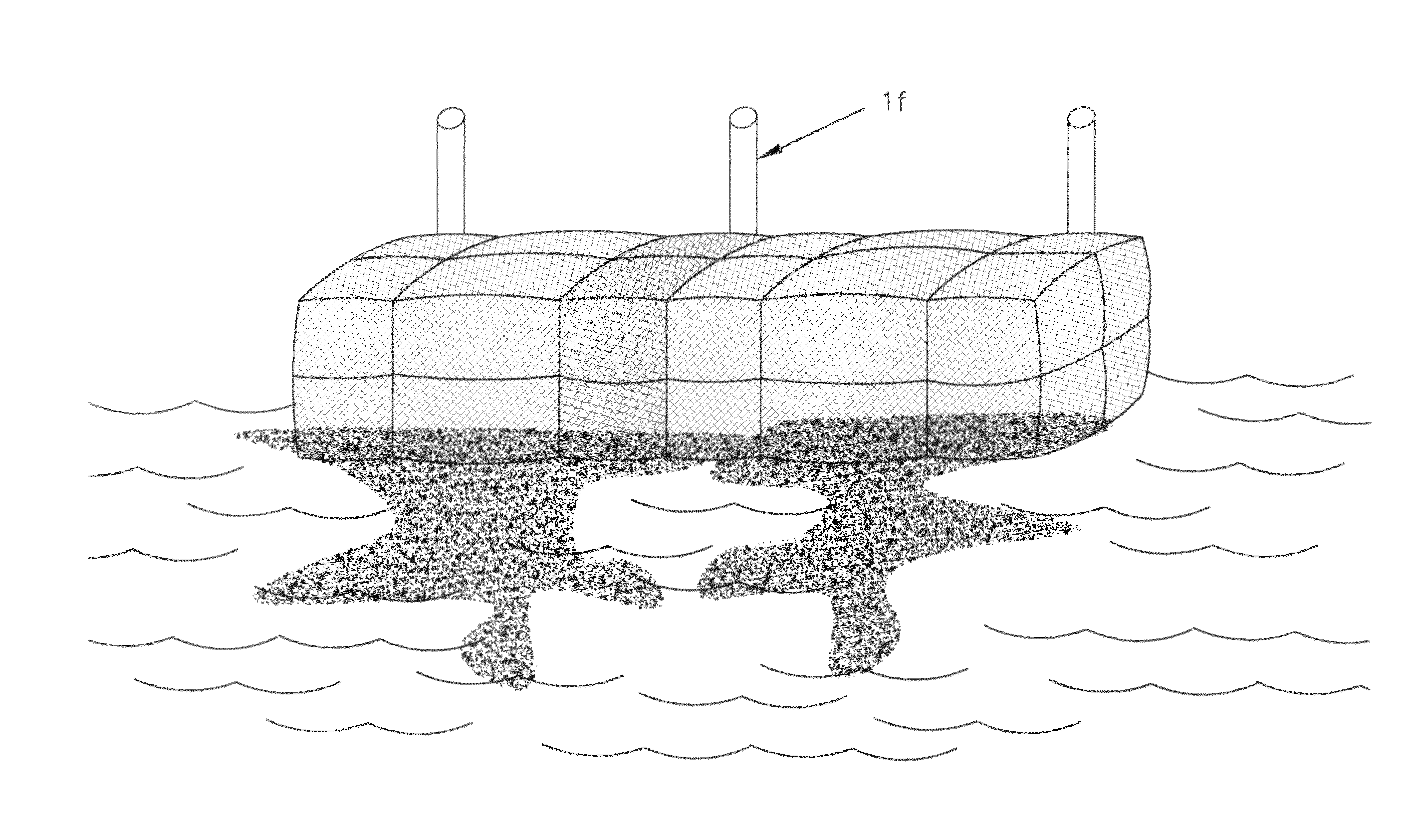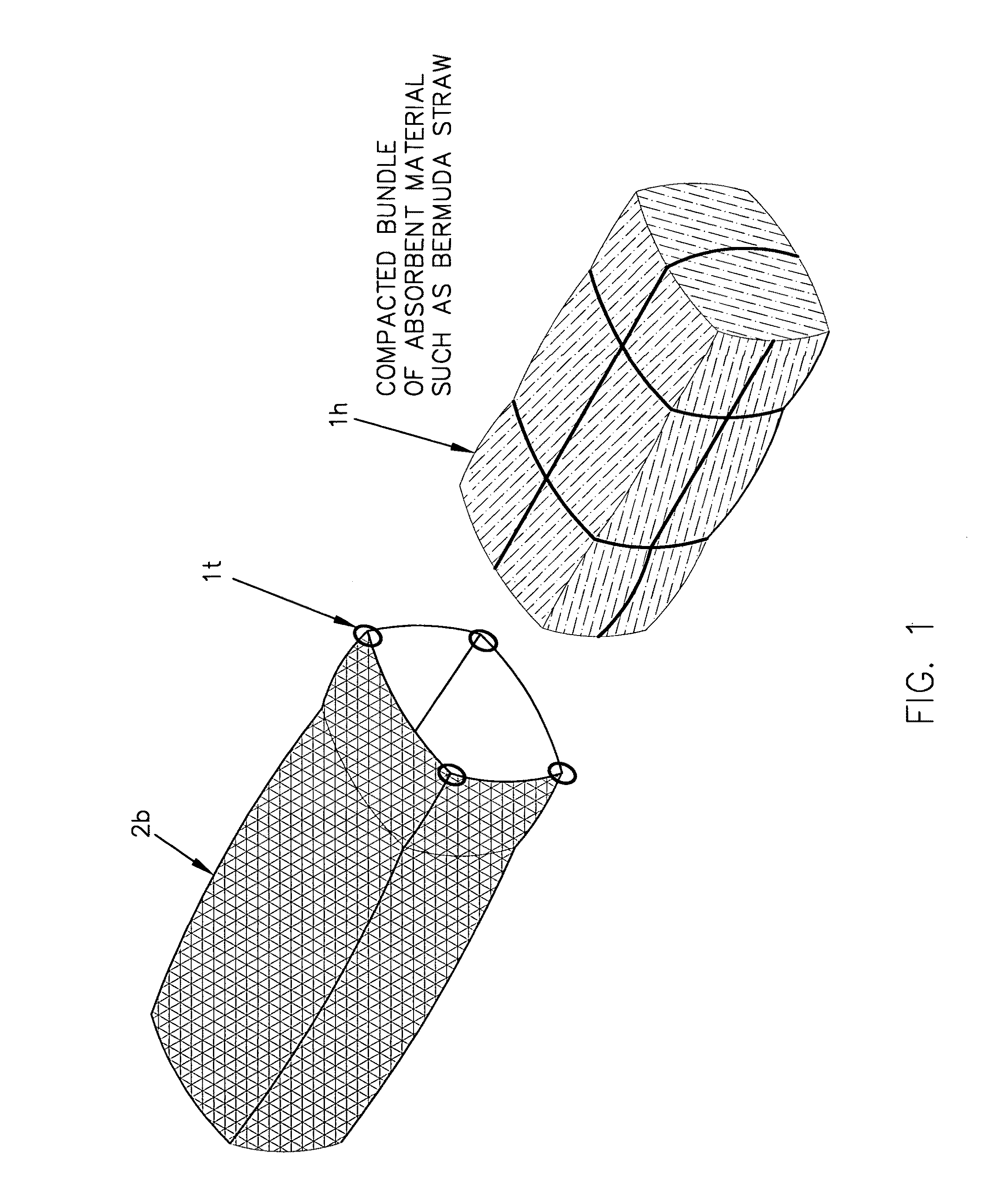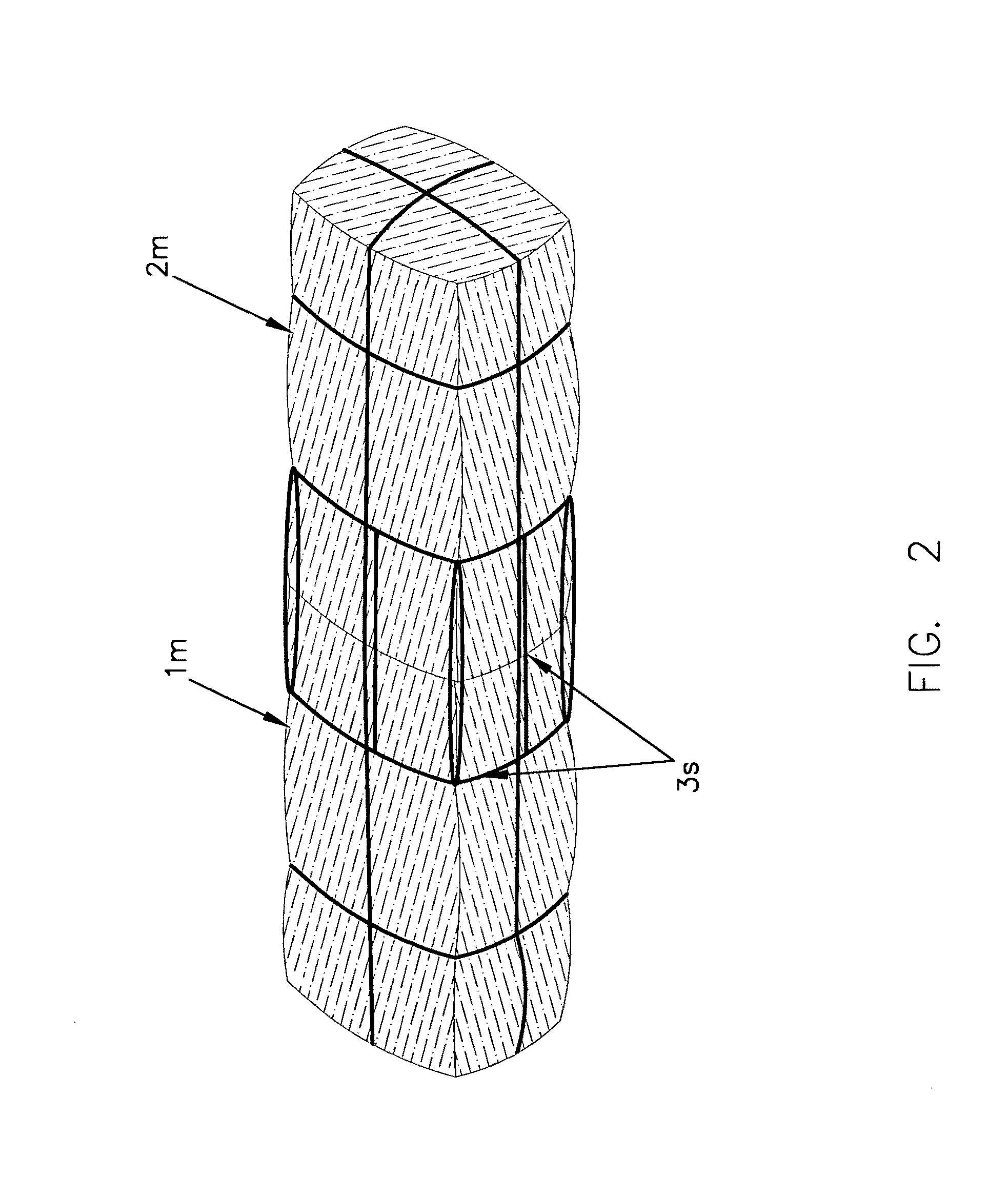Oil containment barrier boom for shorelines/marshes/wetland
a technology for containment barriers and shorelines, applied in water cleaning, climate change adaptation, construction, etc., can solve the problems of long-lasting damage to coastal wetlands and beaches, affecting property values, and killing vital vegetation needed to withstand erosion and loss of wetlands, so as to achieve effective and durable effects
- Summary
- Abstract
- Description
- Claims
- Application Information
AI Technical Summary
Benefits of technology
Problems solved by technology
Method used
Image
Examples
Embodiment Construction
[0024]The object of the current invention is to provide a method of interconnecting individual bagged bales of natural materials in such a way as to provide a more effective and durable barrier booms for containing and absorbing polluting discharges in costal wetland and beach environments.
[0025]FIG. 1 illustrates the basic construction of the individual modules. Element 1h denotes a compacted bundle of absorbent material such as Bermuda grass straw, or other natural biodegradable materials, capable of absorbing pollutants and filtering contaminants when immersed in waters at shorelines of coastal marshes and beaches. The nominal dimensions of such bales are 36 in. long×18 in. high×12 in. wide (the bottom surface area measures 36 in.×12 in.). The straw material within the bails may be infused with oil-eating microbes to detoxify oil and hydrocarbon pollutants. The bale's rectangular shape and structure are maintained by various straps placed around the outside.
[0026]Also shown in FI...
PUM
 Login to View More
Login to View More Abstract
Description
Claims
Application Information
 Login to View More
Login to View More - R&D
- Intellectual Property
- Life Sciences
- Materials
- Tech Scout
- Unparalleled Data Quality
- Higher Quality Content
- 60% Fewer Hallucinations
Browse by: Latest US Patents, China's latest patents, Technical Efficacy Thesaurus, Application Domain, Technology Topic, Popular Technical Reports.
© 2025 PatSnap. All rights reserved.Legal|Privacy policy|Modern Slavery Act Transparency Statement|Sitemap|About US| Contact US: help@patsnap.com



